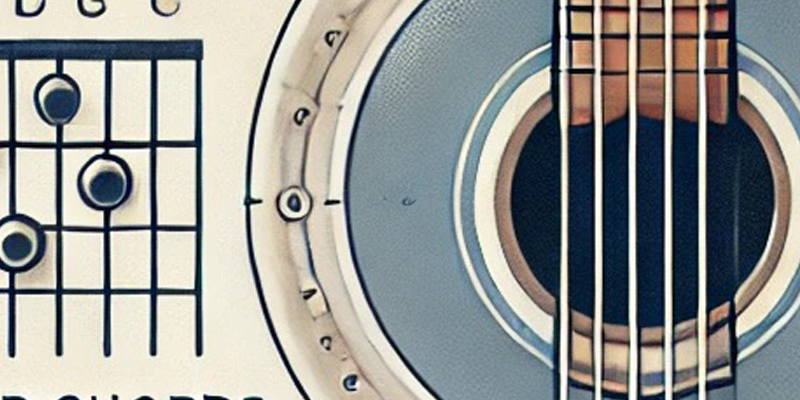1. Basic Concepts
Notes and the Fretboard:
The fretboard is the map of notes. Each fret on each string represents a different note. Knowing the names of the notes on the fretboard is fundamental.
- Standard tuning: E, A, D, G, B, E
- Notes on the low E string (open to 12th fret): E, F, F#, G, G#, A, A#, B, C, C#, D, D#, E
- Use octave patterns to locate the same notes on different strings.
Octaves:
Notes repeat at higher pitches, known as octaves. Understanding octaves helps in navigating the fretboard.
- An octave is 12 frets higher (or lower) on the same string.
- Find octaves on adjacent strings: e.g., a note on the 3rd fret of the low E string is the same as the note on the 5th fret of the D string.
2. Scales
Major and Minor Scales:
Scales are constructed using specific patterns of whole steps (W) and half steps (H).
- Major scale pattern: W-W-H-W-W-W-H
- Example in C major: C, D, E, F, G, A, B, C
- Minor scale pattern: W-H-W-W-H-W-W
- Example in A minor: A, B, C, D, E, F, G, A
Common fingerings for scales:
- Use three notes per string for major and minor scales.
Pentatonic and Blues Scales:
These scales are widely used in rock, blues, and other genres.
- Minor pentatonic scale pattern: 1, b3, 4, 5, b7
- Example in A minor pentatonic: A, C, D, E, G
- Blues scale adds a b5 note: A, C, D, Eb, E, G
- Box patterns for pentatonic scales are easy to memorize.
Modes:
Modes are derived from the major scale and offer different tonalities.
- Ionian (Major): 1, 2, 3, 4, 5, 6, 7
- Dorian: 1, 2, b3, 4, 5, 6, b7
- Phrygian: 1, b2, b3, 4, 5, b6, b7
- Lydian: 1, 2, 3, #4, 5, 6, 7
- Mixolydian: 1, 2, 3, 4, 5, 6, b7
- Aeolian (Minor): 1, 2, b3, 4, 5, b6, b7
- Locrian: 1, b2, b3, 4, b5, b6, b7
3. Chords
Basic Chord Construction:
Chords are built from scales by stacking intervals.
- Major chord: root, major third, perfect fifth (e.g., C, E, G)
- Minor chord: root, minor third, perfect fifth (e.g., A, C, E)
Open and Barre Chords:
Common chord shapes and how to move them across the neck.
- Open chords: C, A, G, E, D
- Barre chords: Moveable shapes based on E and A open chords.
- Examples: F major (E shape on 1st fret), B minor (A shape on 2nd fret)
Extended Chords:
Seventh chords, ninth chords, and beyond add richness to music.
- Major 7th: root, major third, perfect fifth, major seventh (e.g., Cmaj7: C, E, G, B)
- Dominant 7th: root, major third, perfect fifth, minor seventh (e.g., G7: G, B, D, F)
- Minor 7th: root, minor third, perfect fifth, minor seventh (e.g., Am7: A, C, E, G)
4. Chord Progressions
Common Progressions:
Discuss common chord progressions and their musical contexts.
- I-IV-V: Used in countless songs (e.g., C-F-G in C major)
- ii-V-I: Common in jazz (e.g., Dm-G7-C in C major)
Transposing:
Change the key of a progression using the capo or by shifting chord shapes.
- Using a capo: Capo on 2nd fret and play C shapes to sound in D.
- Shifting shapes: Move G shape up two frets to play A chord.
5. Intervals
Definition and Types:
Intervals are the distance between two notes, crucial for understanding melody and harmony.
- Major intervals: 2nd, 3rd, 6th, 7th
- Minor intervals: b2nd, b3rd, b6th, b7th
- Perfect intervals: unison, 4th, 5th, octave
Playing Intervals:
Show how to play intervals on the guitar, such as thirds, fifths, and sevenths.
- Major third: Four frets apart on the same string (e.g., G to B on the low E string)
- Perfect fifth: Seven frets apart or on adjacent strings (e.g., A to E)
6. Rhythm and Timing
Time Signatures:
Explain common time signatures and how to count them.
- 4/4 time: Four beats per measure, common in rock and pop.
- 3/4 time: Three beats per measure, often used in waltzes.
Strumming and Picking Patterns:
Discuss various rhythmic patterns and techniques.
- Down-up strumming: Downstroke on the beat, upstroke on the offbeat.
- Fingerpicking: Pluck strings individually, often with thumb and fingers.

